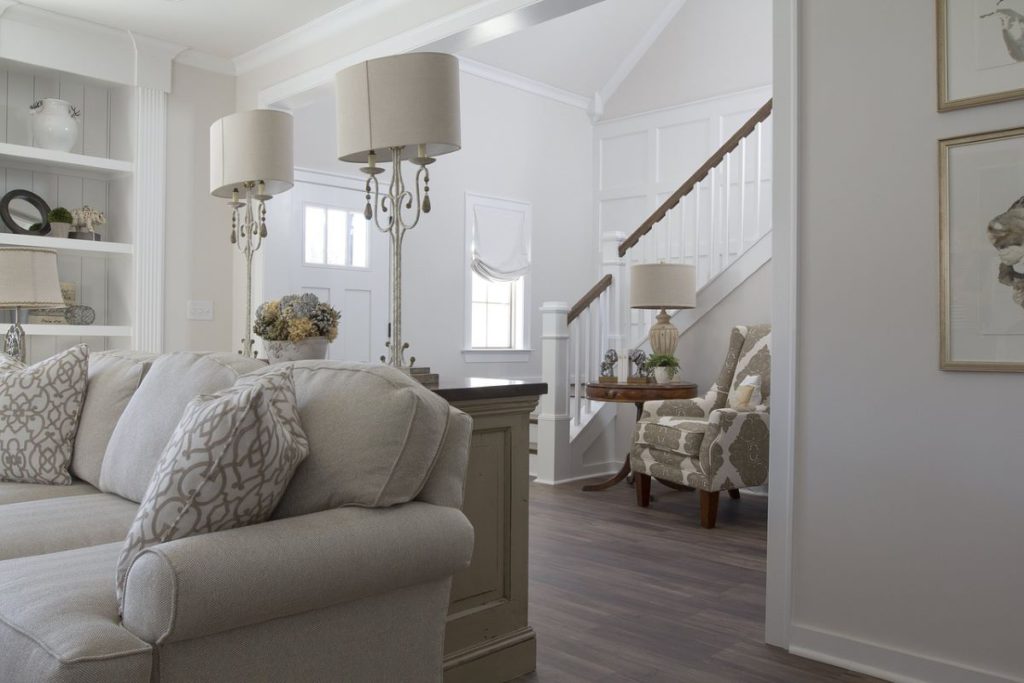Interior design is an art form that goes beyond merely arranging furniture and selecting colour schemes. It’s about crafting spaces that evoke emotions, inspire creativity, and offer a sense of comfort and belonging. One of the essential elements in achieving this is adding depth and dimension to your interior. By creating visual interest and a sense of space, you can transform even the most modest of rooms into captivating and inviting environments. Here are some strategies to add depth and dimension to your interior, turning your living spaces into visual masterpieces.
The Power of Colour and Contrast
Colour is a fundamental tool in interior design, and when used strategically, it can significantly impact the perceived dimensions of a room. Lighter colours tend to make spaces feel more open and airy, while darker hues can add depth and cosiness.
Consider using a lighter shade on the walls, such as soft pastels or neutral tones. Then, introduce contrast by adding darker elements, like richly coloured furniture, accent walls, or bold artwork. This juxtaposition of light and dark elements will instantly add depth and dimension to your space.
Texture and Materials

Texture plays a crucial role in creating depth and dimension within an interior. A room with only smooth and glossy surfaces may feel one-dimensional and sterile. To counteract this, mix and match textures and materials.
For instance, incorporate plush, textured rugs, tactile fabrics on furniture, and varying surface finishes on wall treatments. The interplay between different textures not only adds visual interest but also makes the room feel more layered and inviting.
Lighting as a Design Element
Incorporating lighting into your interior design is not merely a functional necessity but a powerful tool to enhance the dimensionality of your space. Suspended ceiling metal fixtures can play a pivotal role in creating captivating shadows and highlights that interact with the perception of depth. These fixtures, strategically placed, draw attention to specific areas of the room, adding layers of illumination. With the addition of dimmers, you gain the flexibility to adjust the intensity of light throughout the day, allowing for an ever-changing ambience in your suspended ceiling environment.
Mirrors and Reflective Surfaces
Mirrors are renowned for their ability to visually expand a room by reflecting light and creating the illusion of depth. Consider adding oversized mirrors on a wall opposite a window to maximise natural light reflection.
In addition to mirrors, reflective surfaces like glass, polished metals, and glossy tiles can also contribute to a more dimensional interior. Incorporate these materials in furniture, decor, or even as backsplashes in the kitchen or bathroom.
Art and Decor Arrangement
The arrangement of art and decor can have a significant impact on the perception of depth in a room. Artworks that incorporate perspective, such as landscapes or cityscapes, can create the illusion of spatial depth. Grouping artwork in clusters or gallery walls can add dimension by drawing the eye in multiple directions.
Using oversized decor items or furniture pieces as focal points can also give the room a more expansive feel. Large statement pieces can serve as visual anchors that capture attention and provide a sense of scale.
Furniture Placement and Scale
The way you arrange furniture can either enhance or hinder the depth and dimension of a room. Opt for furniture with varying heights and shapes to create a dynamic visual flow. Consider placing taller items, like bookshelves or cabinets, against walls to draw the eye upward and add height to the room.
Try maintaining a balance between open spaces and areas filled with furniture. An overcrowded room can feel cramped and two-dimensional, while a well-proportioned layout can enhance the sense of space.
Creating Visual Lines and Pathways
Visual lines and pathways are essential for guiding the eye through a room and creating a sense of depth. Utilise architectural elements like archways, columns, and mouldings to define these lines. Also, incorporate elements that lead the eye from one area to another, such as a hallway that opens into a larger living space.
Cleverly placed furniture and decor can also establish visual pathways. For example, a runner rug in a hallway or a series of pendant lights can create a sense of movement and direction within the room.
Layering Textiles and Accessories
To add warmth and dimension, layer textiles and accessories throughout your interior. Start with a base layer of curtains or drapes that frame windows and add softness. Then, layer in throw pillows, blankets, and upholstery with varying patterns and textures.
Accessories such as vases, sculptures, and decorative trays can be strategically placed to create visual interest and depth. Don’t be afraid to mix and match different styles and materials to achieve a harmonious yet layered look.
Whether you’re working with a small apartment or a spacious home, these design principles can help you create interiors that inspire and captivate. Don’t forget – interior design is a creative journey, so don’t hesitate to experiment and let your personal style shine through as you craft dimensional masterpieces within your living spaces.




